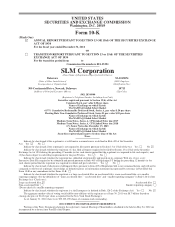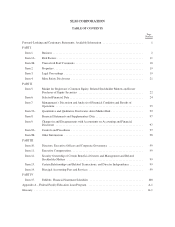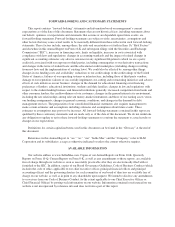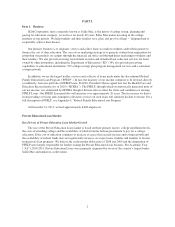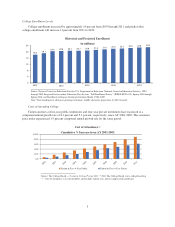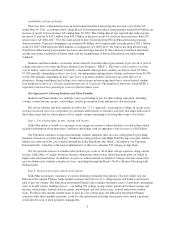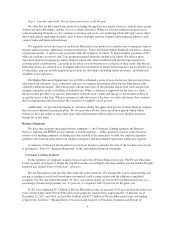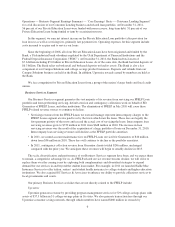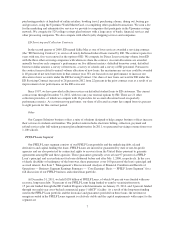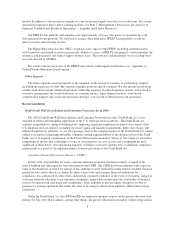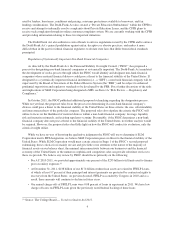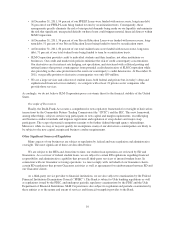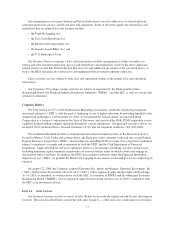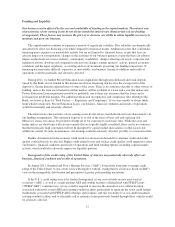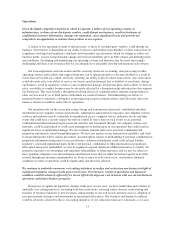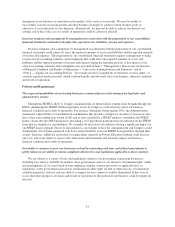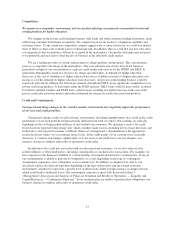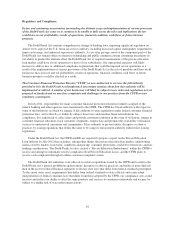Sallie Mae 2011 Annual Report Download - page 8
Download and view the complete annual report
Please find page 8 of the 2011 Sallie Mae annual report below. You can navigate through the pages in the report by either clicking on the pages listed below, or by using the keyword search tool below to find specific information within the annual report.Operations — Business Segment Earnings Summary — ‘Core Earnings’ Basis — Consumer Lending Segment”
for a full discussion of our Consumer Lending business and related loan portfolio. At December 31, 2011,
56 percent of our Private Education Loans were funded with non-recourse, long-term debt; 51 percent of our
Private Education Loans being funded to term by securitization trusts.
In this segment, we earn net interest income on the Private Education Loan portfolio (after provision for
loan losses) as well as servicing fees, primarily late payment fees. Operating expenses for this segment include
costs incurred to acquire and to service our loans.
Since the beginning of 2006, all of our Private Education Loans have been originated and funded by the
Bank, a Utah industrial bank subsidiary regulated by the Utah Department of Financial Institutions and the
Federal Deposit Insurance Corporation (“FDIC”). At December 31, 2011, the Bank had total assets of
$7.6 billion including $5.0 billion in Private Education Loans. As of the same date, the Bank had total deposits of
$6.3 billion. The Bank relies on both retail and brokered deposits to fund its assets. The Bank is also a key
component of our Campus Solutions and college savings product businesses. Deposits and refunds from our
Campus Solutions business are held at the Bank. In addition, Upromise rewards earned by members are held at
the Bank.
We face competition for Private Education Loans from a group of the nation’s larger banks and local credit
unions.
Business Services Segment
Our Business Services segment generates the vast majority of its revenue from servicing our FFELP Loan
portfolio and from performing servicing, default aversion and contingency collections work on behalf of ED,
Guarantors of FFELP Loans, and other institutions. The elimination of FFELP in July 2010 will cause these
FFELP-related revenue sources to continue to decline.
• Servicing revenues from the FFELP Loans we own and manage represent intercompany charges to the
FFELP Loans segment at rates paid to us by the trusts which own the loans. These fees are legally the
first payment priority of the trusts and exceed the actual cost of servicing the loans. Intercompany loan
servicing revenues grew to $739 million in 2011 from $648 million in 2010. The increase in loan
servicing revenues was the result of the acquisition of a large portfolio of loans on December 31, 2010.
Intercompany loan servicing revenues will decline as the FFELP portfolio amortizes.
• In 2011, we earned account maintenance fees on FFELP Loans serviced for Guarantors of $46 million,
down from $56 million in 2010. These fees will continue to decline as the portfolio amortizes.
• In 2011, contingency collection revenue from Guarantor clients totaled $246 million, unchanged
compared with the prior year. We anticipate these revenues will begin to steadily decline in 2013.
The scale, diversification and performance of our Business Services segment have been, and we expect them
to remain, a competitive advantage for us. As FFELP-related service revenue streams decline, we will strive to
replace them over the coming years by exploring both complementary and diversified strategies to expand
demand for our services in and beyond the student loan market. For example, in 2011 we launched Sallie Mae
Insurance Services to offer tuition, renters’ and student health insurance to college students and higher education
institutions. We also acquired SC Services & Associates to enhance our ability to provide collections services to
local governments and courts.
Our primary Business Services activities that are not directly related to the FFELP include:
Upromise
Upromise generates revenue by providing program management services for 529 college-savings plans with
assets of $37.5 billion in 31 college-savings plans in 16 states. We also generate transaction fees through our
Upromise consumer savings network, through which members have earned $660 million in rewards by
6

